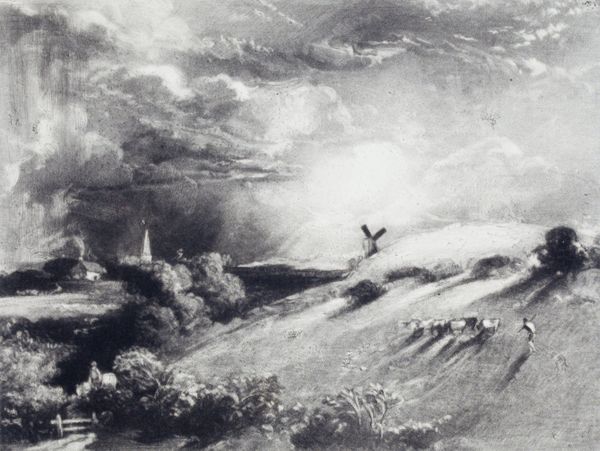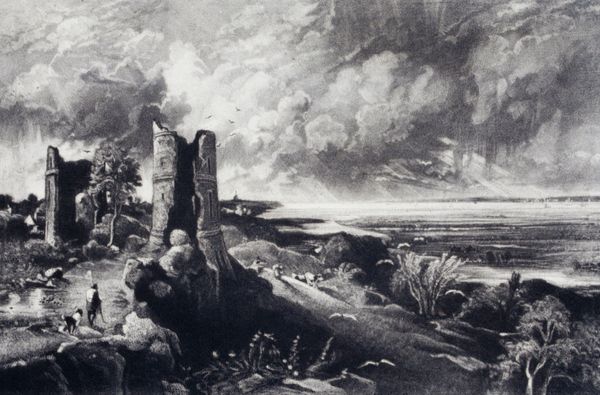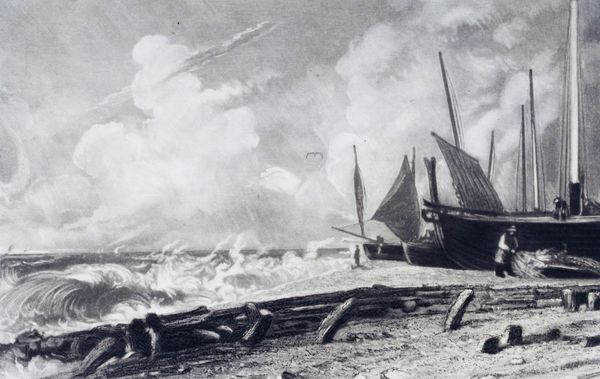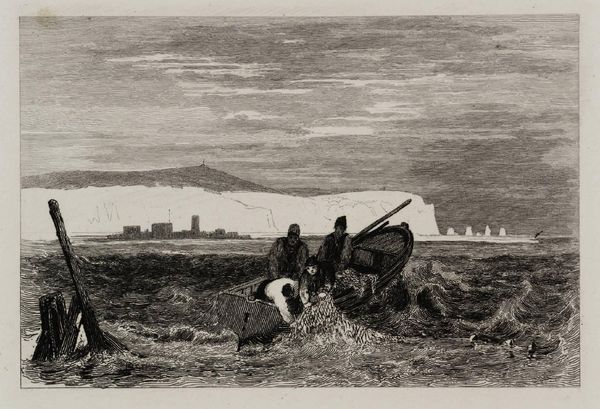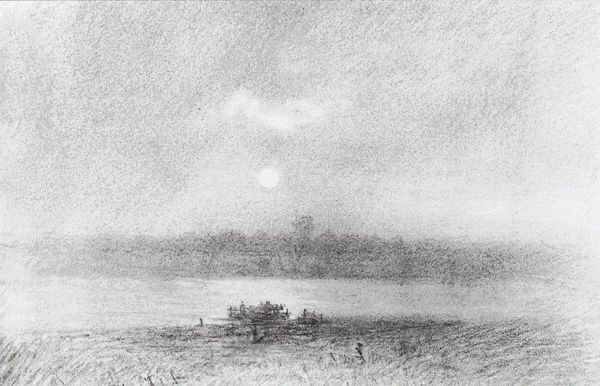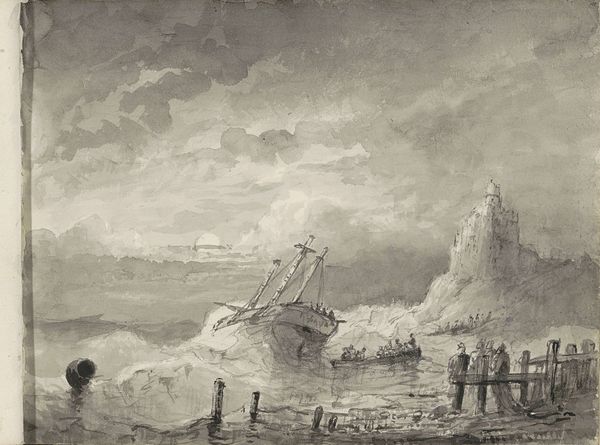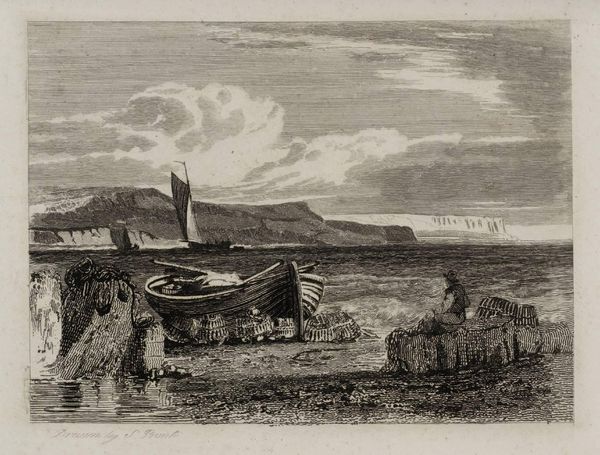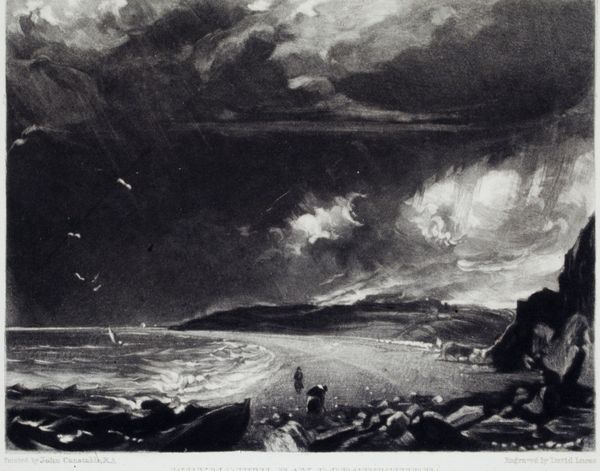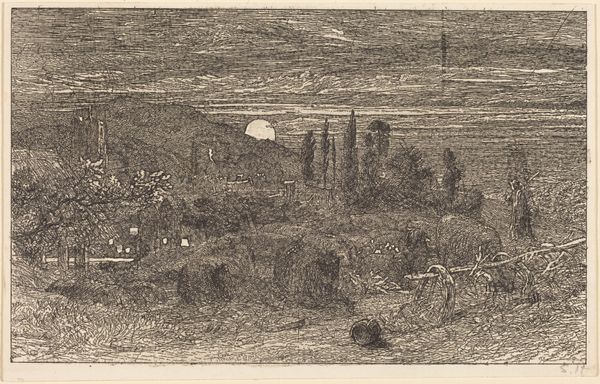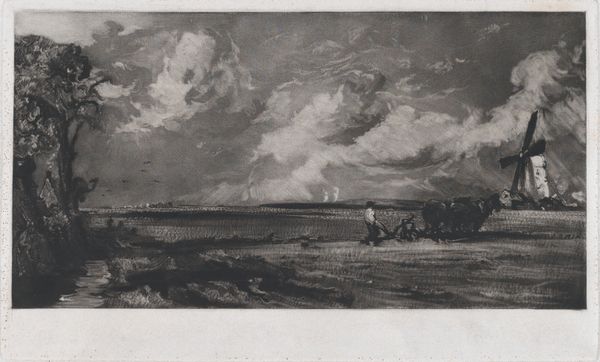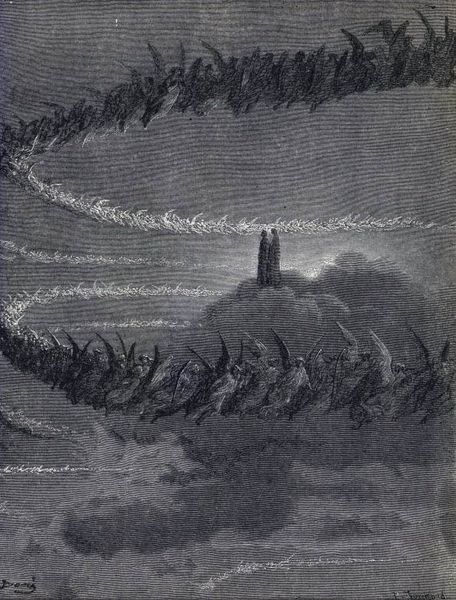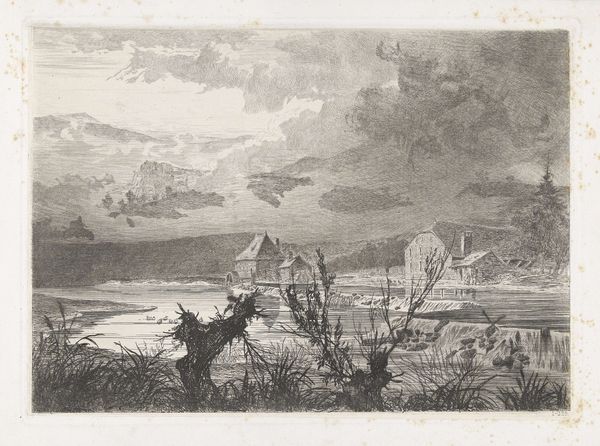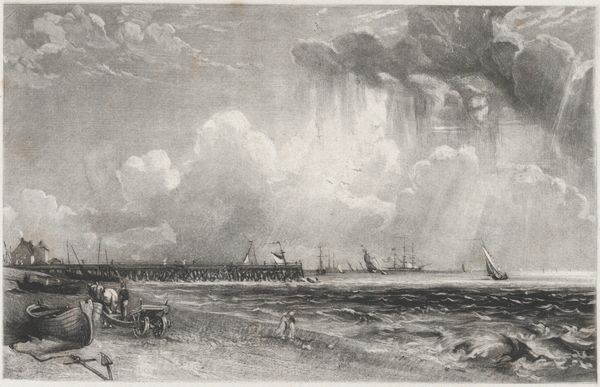
print, mezzotint
# print
#
landscape
#
monochrome colours
#
romanticism
#
mezzotint
#
history-painting
#
monochrome
Dimensions: 7 x 10 in. (17.78 x 25.4 cm) (plate)
Copyright: Public Domain
Curator: Good morning. Today we are looking at “Stonehenge,” a mezzotint print by John Constable, likely created sometime between 1830 and 1855. It's currently held here at the Minneapolis Institute of Art. Editor: It evokes a sense of primordial gloom, doesn’t it? The low horizon and monochrome palette make it feel ancient, even forbidding. Curator: Constable worked from existing drawings of the site, focusing particularly on light and shadow rendered through the mezzotint technique. That process involves roughening the plate for a rich, velvety black, then burnishing areas to create lighter tones. Think of the labour, physically altering the material for each print. It reflects a shift in how art was being produced. Editor: Yes, but consider the symbolic weight Stonehenge carried, even in Constable's time. To the Romantic sensibility, these ancient ruins embodied a connection to a lost, perhaps more spiritually attuned past. The enduring presence of the stones evokes themes of time, memory, and the sublime. Curator: Sublimity came at a cost. The production of mezzotints required skill and specific materials, restricting who could create and own such works. It challenges the common associations of art with high culture, placing production within wider societal hierarchies. Editor: Though access might have been limited, its imagery surely impacted those who beheld it. I'm drawn to the image of the moon or sun, just breaking through the heavy clouds. It seems to me to suggest enduring hope amid a bleak history. And look, some people travelling across the hill towards the monument. Pilgrims of a kind? Curator: Perhaps visitors, maybe even Constable himself, contemplating the labor and effort that made not only Stonehenge, but this very print possible. Considering social and material dimensions, in my opinion, is integral to interpreting its impact. Editor: And interpreting symbols helps reveal layers of emotional resonance over time. Ultimately, it appears that it represents for all time a timeless longing for connection with the past. Curator: Absolutely. A connection forged through artistic processes deeply interwoven with its social context. Editor: A beautifully dismal vision indeed! Curator: Precisely, quite impactful.
Comments
No comments
Be the first to comment and join the conversation on the ultimate creative platform.
